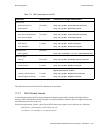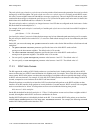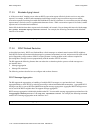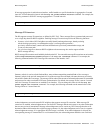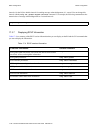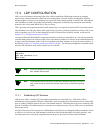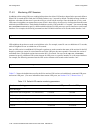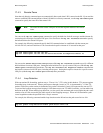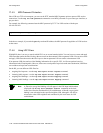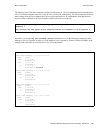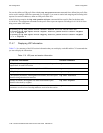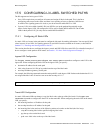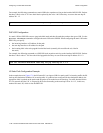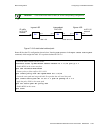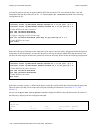
Riverstone Networks RS Switch Router User Guide Release 8.0 17-23
MPLS Configuration LDP Configuration
17.4.3 Remote Peers
Note that only directly-connected peers are automatically discovered when LDP is started on the RS. If you need the
router to establish LDP communications with an LSR that is not directly connected, use the
ldp add remote-peer
command to specify the router ID of the remote LSR.
Note
The router ID of the remote LDP peer must be the loopback address of the remote
router.
You can use the
ldp set remote-peer
command to specify the hold time for hello messages and the timeout for
session keepalive messages for remote LDP peers. You can also use the
ldp set interface
command to specify
the hello hold time for remote LDP peers.
For example, the following commands specify that LDP communications be established with the remote peer
100.100.100.102, and set a hold time of 60 seconds and a keepalive timeout of 45 seconds for that peer:
You can use the
remote-hello-hold-time
parameter of the
ldp set interface
command to specify a different
hello hold time for remote LDP peers. Setting the hello hold time for a specific remote LDP peer (with the
ldp set
remote-peer
command) takes precedence. The
ldp set interface all keepalive-timeout
command sets
the keepalive timeout for all LDP peers, including remote peers. Setting the keepalive timeout for a specific remote
LDP peer (with the
ldp set remote-peer
command) takes precedence.
17.4.4 Loop Detection
With conventional IP forwarding, packets carry a “Time to Live” (TTL) value in their headers. TTL protects against
forwarding loops in the network. When a packet passes through a router, its TTL is decremented by 1. If the TTL
reaches 0 before the packet reaches its destination, the packet is discarded. Certain LSP segments may not use TTL.
To prevent label request messages from looping in LSPs that traverse non-TTL MPLS networks, you can enable loop
detection on the RS. When enabling loop detection, you also specify the maximum path vector length (the path vector
contains a list of LSRs traversed by the label request or label mapping message). When an LSR encounters a path
vector length that reaches the specified limit, a loop is assumed.
For example, the following command enables loop detection on the RS and sets the path vector limit to 100:
ldp add remote-peer 100.100.100.102
ldp set remote-peer 100.100.100.102 hello-hold-time 60 keepalive-timeout 45
ldp set global loop-detection-enable path-vector-limit 100



